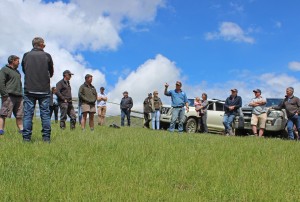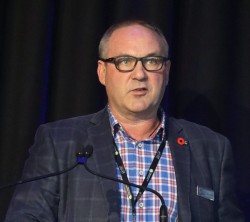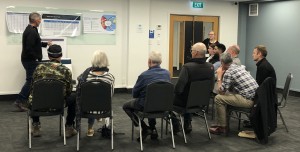May 24, 2024
Making things simpler, not harder, for deer farmers in farm planning, managing quality assurance and genetics is DINZ industry capability manager John Ladley’s focus, he told delegates at the Deer Industry Conference.

Networks built during the Passion2Profit programme will be leveraged for the deer industry’s IFP project.
The main fuel for this deer industry initiative, “Engaged Farmers to Succeed”, is $700,000 granted by government to this sector for an national integrated farm planning (IFP) programme for farmers and growers. The programme is funded through to 2026 and is administered through the Ministry for Primary Industries (MPI).
Ladley explained the background behind IFP, including that, “It’s a fast-changing landscape, with over 80 percent of our primary sector exports going into countries that have mandated climate and environment, social and governance (ESG) reporting.”
Having an IFP is about “making things simpler, not harder,” he told delegates.
“Removing the clutter, avoiding duplication and using sound farm frameworks and farm planning to enable us to meet the future needs of our markets and customers and allow you to better cope with regulation.”
MPI kicked things off by creating planning templates covering a basic farm plan, people, biosecurity, animal welfare, emissions, biodiversity and intensive winter grazing.
Deer farmers “aren’t interested in yet another cost of doing business,” Ladley explains. For IFP to work, they need to understand its benefits and how it could improve returns. When done properly, IFP can act as a template for someone taking over a farm business from scratch.

John Ladley wants to “make things simpler,” for deer farmers.
Deer farmers should be able to leverage the work that’s currently being done, he believes. Still at the start of the process, DINZ is monitoring and evaluating to find “where people are on that farm planning bell curve. That will drive what we do.”
Those “ahead of the curve” will find they have already done a lot of the work for IFP, he notes.
Ladley points to the deer industry’s big advantage: its strong connections through the active NZDFA and networks built through the seven-year Passion2Profit (P2P) programme, which ran until 2022.
With around 300 deer farmers signed up to the NZ Farm Assurance Programmes (NZFAP), around 30 accredited to NZFAP Plus, “and many more in the process of signing up,” these “are a very good framework for an IFP and are useful building blocks,” explains Ladley.
DINZ’s proposed modular approach will help, “deer farmers build an IFP based on what they’ve already done and take on the work in bite-sized chunks.”
Looking ahead at deer genetics
Another area within Ladley’s remit is ensuring deer farmers have the best genetic tools and resources available for breeders and commercial farmers, he explained.
“Significant work has been undertaken over the past year, some of which will be introduced in coming months,” he said.

Richard Hilson diving into velvet genetics with one of the groups during the workshop.
Delegates taking part in the Genetics for Profit – 2024 Breeding Values (BVs) and Indices workshops at conference learned about the BVs and indices from DeerSelect manager Sharon McIntyre, while vet Richard Hilson looked at velvet genetics and First Light’s Matt Gibson at venison genetics.
Most significant was the work done on cross-breed evaluation, Ladley explained. However, technical difficulties meant a decision was made to remain with in-breed evaluations. “However, all is not lost, because we have some new cross-breed data to work with.”
That includes new BVs for fertility, an updated meat module based on carcase data, and “some updated economic values and new indices and sub-indices as well.”
The current Sheep Improvement Limited (SIL) system the DeerSelect data is based on will change to nProve in the near future, which breeders were able to have a sneak peak at during conference.
“nProve is a more accessible and interactive system and will allow breeders to work with their own data whenever required,” said Ladley.
Other exciting work is happening with AgResearch around genomic-informed evaluation, said Ladley. This is making more use of the genotype information for breeders who do DNA parentage and increasing the accuracy of BVs. Genomic BVs are also “necessary if we are to have methane BVs in the future.”
Other areas of support for farmers from Ladley’s team are around Advance Parties (Sara Elmes), Johne’s Disease monitoring (Kathie Goodwin-Ray) and the industry’s quality assurance programmes, especially the NZ Farm Assurance Programme and National Velvet Standards Body (NVSB)’s velvet removal programme and VelTrak.

